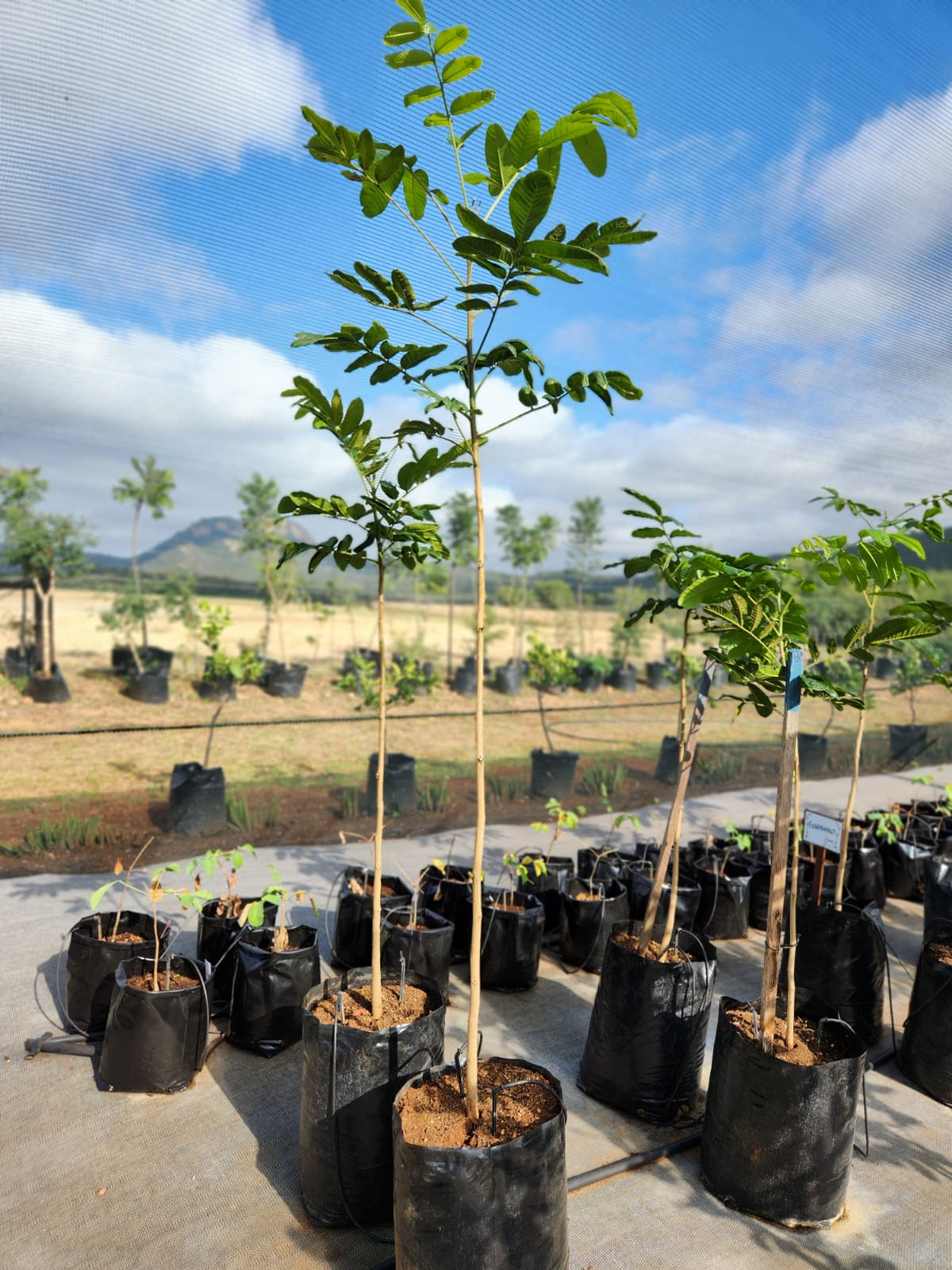Natal Mahogany (Rooi Essenhoutboom) #
Trichilia emetica

Quick Info #
- Distribution & habitat: Sudan to KwaZulu-Natal – coastal forests and river forests, in sandy areas or alluvial soil
- Family: Meliaceae
- Florescence: August to November
- Fruiting: December to April
- Leaf habit: evergreen or briefly deciduous
- Name origin: “Trichilia” is Greek for “in three parts”, which refers to the fruit, while “emetica” refers to having emetic properties
- Other names: mmaba (Northern Sotho), mutuhu (TshiVenda), nkulu (Xitsonga), umkhuhlu (Zulu), umkuhlu (SiSwati)
Description #
The beautiful Natal mahogany is a medium to large tree, with maximum heights reported between 20–30 m, but the branches of the dense, rounded crown hang low. The trunk is swollen at the base. Aged bark retains a fairly smooth feel. The leaves grow in clusters of several pairs and a single leaf at the tip, and are dark green and glossy on one side and a lighter green on the other, featuring prominent nerves.
The creamy-green flowers are clock-shaped, sweetly-scented and tiny. The fruits, which are dehiscent capsules, hang in bunches and are roughly shaped like pears, although rather small. They feature three prominent dents and split open in three valves. The wood is soft and light. The black seeds, enveloped by reddish arils, are said to be poisonous – especially in the coat – and contain lots of oil. This tree is a fast grower and not very cold-resistant.
Uses & Ecology #
The tree offers cover and shade for gardens and for game, livestock and some birds. Various bird species also eat the seeds. The nectar in the flowers appeals particularly to sunbirds. Different mammals eat the fruits and leaves. Some larvae also live off the leaves.
The wood gets used to make furniture, which can be darkened with teak oil. It’s also used to make musical instruments and canoes. It is even used as chewsticks to maintain oral health.
A root decoction has been used as a fever treatment and a purgative. Leaf and fruit poultices are used in the treatment of eczema.
The bark gets used to make an emetic and lavage. In its powdered form it is considered a remedy for intestinal ailments. It is also used to make a pinkish dye.
An oil extract from the seeds is used to treat rheumatic, make soap, dress wounds or preserve food. It also moisturizes the skin. The seeds themselves have been included in a number of food recipes, although the poisonous seedcoat needs to be removed.
References #
- Fern, K. (2025). Trichilea emetica. Available at: https://tropical.theferns.info/viewtropical.php?id=Trichilia+emetica (Accessed: 24 October 2025)
- Mothogoane, M.S. (2014) Trichilea emetica. Available at: https://pza.sanbi.org/trichilia-emetica (Accessed: 24 October 2025)
- Van Wyk, B & P. (1997) Field Guide to Trees of Southern Africa. Cape Town: Struik Publishers.
- Van Wyk, P. (1988) Veldgids tot die Bome van die Nasionale Krugerwildtuin. Cape Town: Struik Publishers.
- Venter, F & J.A. (2002) Benut on Inheemse Bome. Pretoria: Briza Publications.
Caution: Consult a qualified health practitioner before considering medically using or ingesting any plant parts. Any mentioned traditional uses are based on cultural practices and anecdotal evidence. They are not necessarily clinically proven or supported by modern scientific studies.